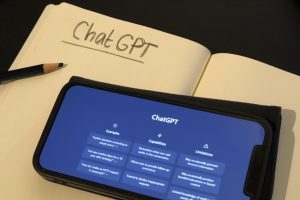 In the dynamic world of education, teachers continually seek fresh and inventive ways to engage their students. ChatGPT, an advanced AI language model, offers a treasure trove of possibilities for crafting unique and stimulating activities. Here, we dive into the top 10 ChatGPT prompts teachers can use to generate uncommon and exciting student activities, ensuring a more interactive and enriched learning experience.
In the dynamic world of education, teachers continually seek fresh and inventive ways to engage their students. ChatGPT, an advanced AI language model, offers a treasure trove of possibilities for crafting unique and stimulating activities. Here, we dive into the top 10 ChatGPT prompts teachers can use to generate uncommon and exciting student activities, ensuring a more interactive and enriched learning experience.
Unveiling the Mystery Box
Prompt: "Create a story about an ancient, mysterious box found in the school's basement. What's inside it?"
This prompt encourages students to delve into creative writing, sparking their imagination and narrative skills. It could lead to a collaborative storytelling session or individual essays, focusing on developing descriptive language and plot construction.
Future City Planning
Prompt: "Design a city of the future that solves a current world problem. What unique features would it have?"
Such a project integrates geography, environmental science, and social studies. Students can work in groups to design their future cities, focusing on sustainability, technology, and societal needs.
Alien Encounter Debates
Prompt: "Debate the potential impact of discovering extraterrestrial life on society. What changes might occur?"
This activity is perfect for honing debate and critical thinking skills. It encourages students to consider scientific, ethical, and social perspectives in a fun and engaging context.
Culinary Chemistry
Prompt: "Explain a cooking recipe as a chemical experiment. What reactions are happening?"
A unique way to make chemistry relatable, this prompt can lead to practical cooking experiments in class where students explore the chemistry behind everyday cooking processes.
Time Travel Diaries
Prompt: "You've traveled back to an important historical event. Write a diary entry describing your experiences."
This activity enhances writing skills and helps students connect emotionally with historical events, fostering a deeper understanding of history.
Math in Nature Scavenger Hunt
Prompt: "Find examples of the Fibonacci sequence in nature around the school."
It is a fun outdoor activity that combines math and biology, encouraging students to observe and find patterns in the natural world.
Dystopian World Symposium
Prompt: "Discuss the pros and cons of living in a dystopian world depicted in a novel you've read."
This can be a group discussion or a symposium-style debate, engaging students in literary analysis, critical thinking, and public speaking.
Musical Emotion Exploration
Prompt: "Compose a piece of music that captures the mood of a current world event."
An activity for music classes encourages students to express their understanding and feelings about world events through musical composition.
Engineering Challenge
Prompt: "Design a simple machine that solves a problem in your community."
This project integrates physics, engineering, and civic education, encouraging practical problem-solving and innovation.
Artistic Interpretation of Dreams
Prompt: "Create an artwork representing a dream or a vision for the future."
A creative arts assignment that allows students to express their inner thoughts, dreams, and aspirations through various artistic mediums.
These 10 ChatGPT prompts present an innovative approach to teaching, moving beyond traditional methods to engage students in creative, critical thinking, and problem-solving activities. By embracing AI-generated ideas, teachers can inspire students to explore and learn in novel and exciting ways.
What our schools have been asking us:
- How can these activities cater to different learning styles?
These prompts offer a range of activities, from writing to practical experiments, catering to visual, auditory, kinesthetic, and logical learners.
- Can these prompts be modified for various age groups?
Absolutely. Teachers can adapt the complexity and depth of each prompt to suit their students' ages and ability levels.
- Do these activities require additional resources?
Most can be conducted with minimal resources, though some may benefit from technology, art supplies, or basic science materials.
- How do these prompts foster collaborative learning?
Many of these activities encourage group work and discussion, fostering teamwork and collaborative problem-solving skills.
- Are these prompts aligned with educational standards?
While they are inherently flexible, teachers should align them with relevant educational standards and learning objectives for maximum educational value.


